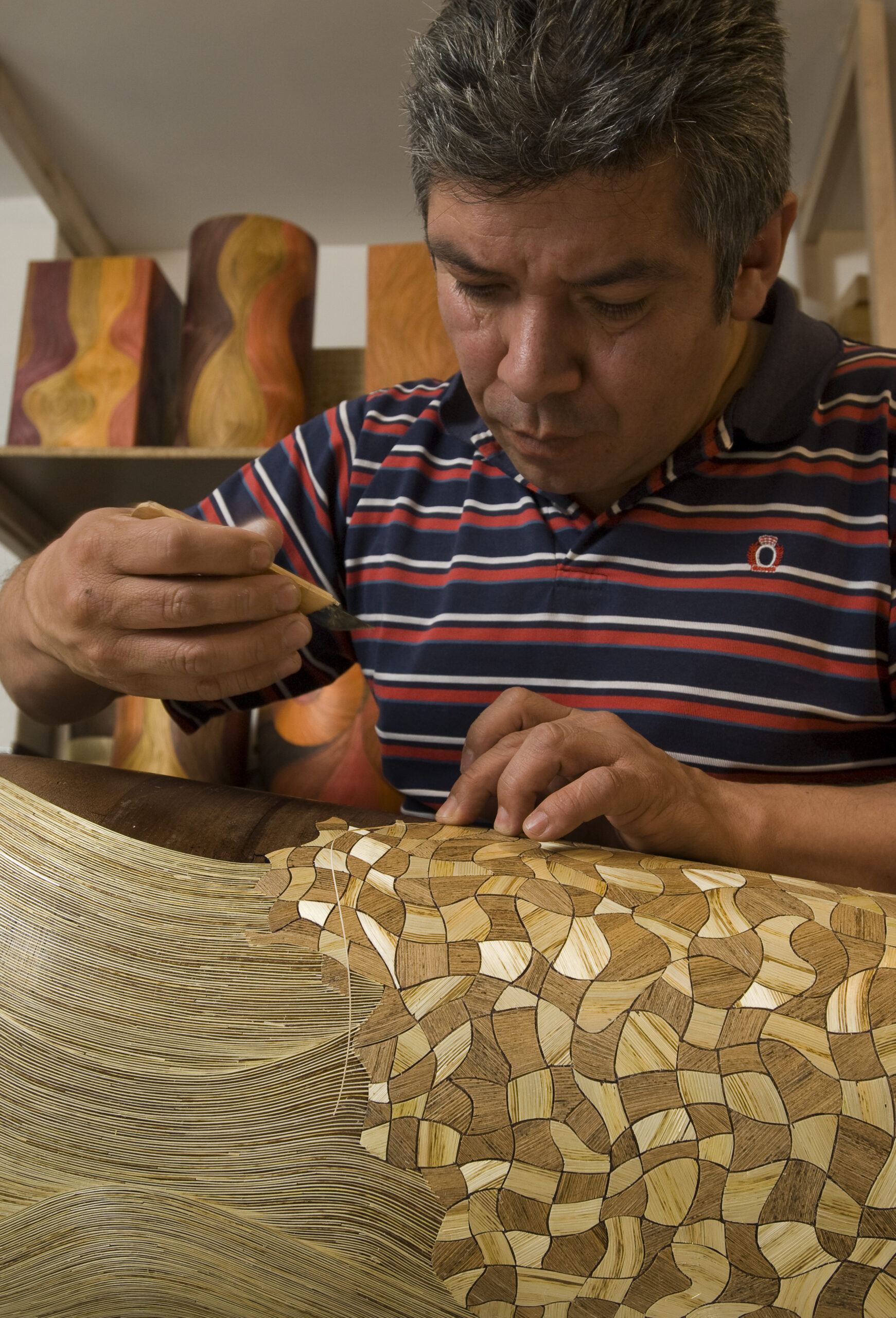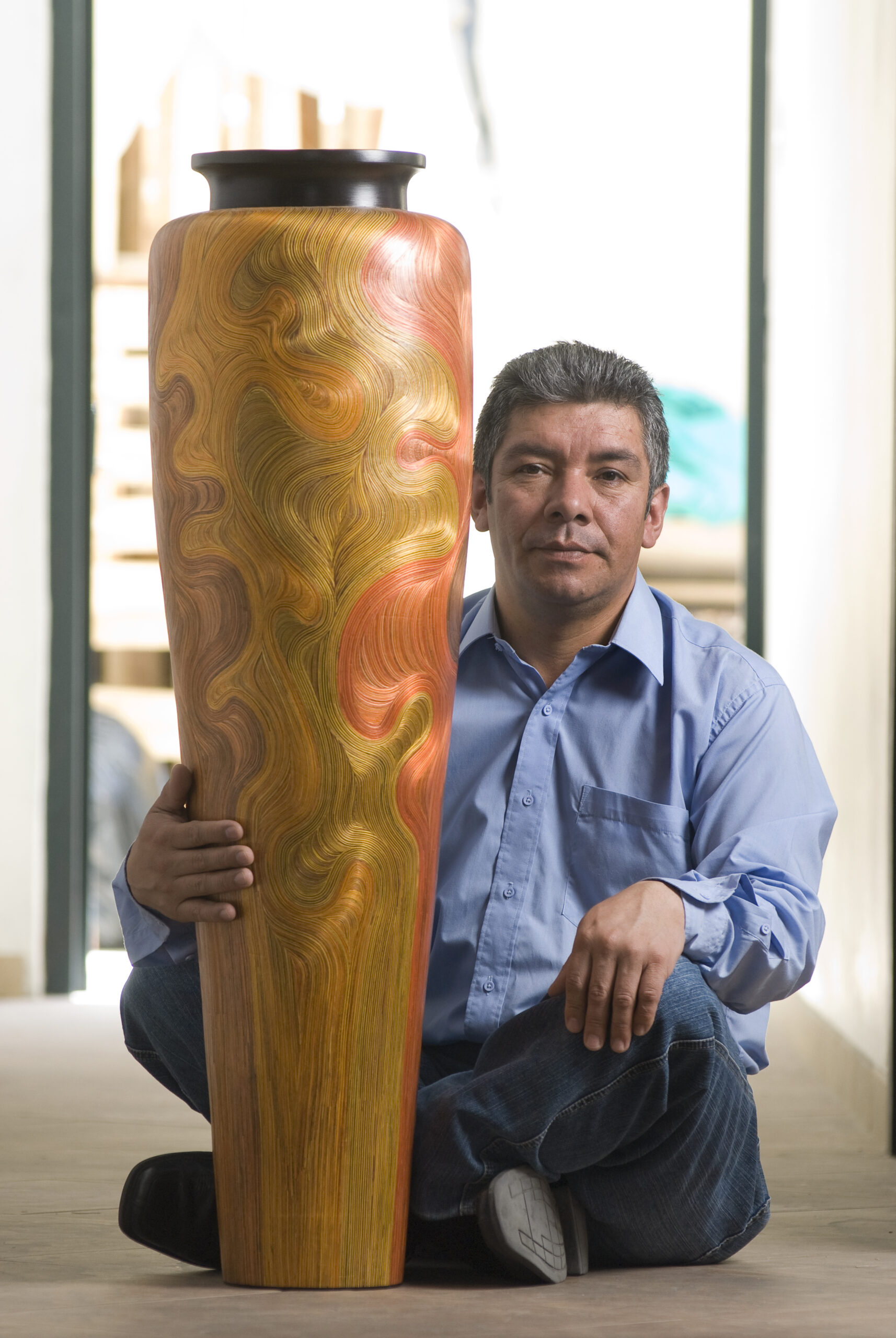Description
La taracea o técnica utilizada en la decoración de objetos de madera, muebles, bargueños o marcos fue ampliamente difundida en Colombia durante la época de la Colonia.
El departamento de Nariño, región de gran belleza natural, ubicado en el sur del país, ha sido cuna de artistas y destacados artesanos. En Pasto su capital, se ha desarrollado el oficio de la taracea, que ha llegado a ser una importante fuente de ingresos y elemento de identidad cultural de la región.
El tamo o tallo del trigo se obtiene de las plantaciones de trigo que se cultivan en el sur del departamento.
El proceso consta de varios pasos: el tallo se abre con un bisturí y se aplana con una piedra de rio, luego se pega sobre papel mantequilla hasta formar una fina lámina. El tinturado se da con colorantes vegetales que varían de tonos ocres a cafés o rojo, vino tinto y verde oscuro.
Las piezas que se van a decorar son elaboradas en madera de pino o cedro por torneros, talladores o ebanistas.
Sobre la lámina del tamo se hace un dibujo a lápiz del motivo con el que se desea decorar un objeto, se corta el contorno que luego se aplica sobre la pieza y se cubre con una película de laca para fijar y proteger el enchape.
Los motivos tradicionales son figurativos y los temas son costumbristas. Se producen artículos como cajas y bargueños; juegos de escritorio; bandejas, lámparas y jarrones.
En los últimos años las obras han evolucionado para responder a los gustos y tendencias de la decoración contemporánea, logrando piezas de gran belleza que son verdaderas obras de arte.
Miguel de la Cruz es reconocido tanto en el país, como en el exterior. Con finos hilos de tamo, da movimiento a sus diseños mediante el uso de líneas curvas, lo que requiere gran destreza, dadas las características del material.
Actualmente, en Pasto 50 artesanos trabajan en 20 talleres. Este oficio se ha convertido en su principal fuente de ingresos.
Bibliografía
Duque, Duque C. Maestros del Arte Popular Colombiano Suramericana Panamericana Formas e Impresos 2010
Montes, Veira S. Oficios las Artesanías Colombianas. Imprelibros S.A. 2005
English
Inlay in straw
The “taracea”, a technique used in the decoration of wooden objects, furniture, bargueños or frames, was widely spread in Colombia during the colonial period. The department of Nariño, a region of great natural beauty, located in the south of the country, has been the cradle of artists and outstanding artisans. In Pasto, its capital, the craft of inlay work has developed into an important source of income and an element of the region’s cultural identity.
The wheat stalk is obtained from the wheat plantations that are cultivated in the south of the department. The process consists of several steps: the stalk is cut open with a scalpel and flattened with a river stone, then glued onto butter paper until it forms a thin sheet. The dyeing is done with vegetable dyes that vary from ochre to brown or red, red wine and dark green.
The pieces to be decorated are made from pine or cedar wood by wood turners, carvers or cabinet makers. A pencil drawing of the motif to be used to decorate an object is made on the sheet of wood, the outline is cut out and then applied to the piece and covered with a film of lacquer to fix and protect the veneer.
The traditional motifs are figurative and the subjects are folkloristic. Items such as boxes and bowls, desk sets, trays, lamps and vases are produced.
In recent years the works have evolved to respond to the tastes and trends of contemporary decoration, achieving pieces of great beauty that are true works of art.
Miguel de la Cruz is renowned both in the country and abroad. He uses fine wool threads to give movement to his designs through the use of curved lines, which requires great dexterity, given the characteristics of the material. Currently, in Pasto, 50 artisans work in 20 workshops. This trade has become their main source of income.





Reviews
There are no reviews yet.